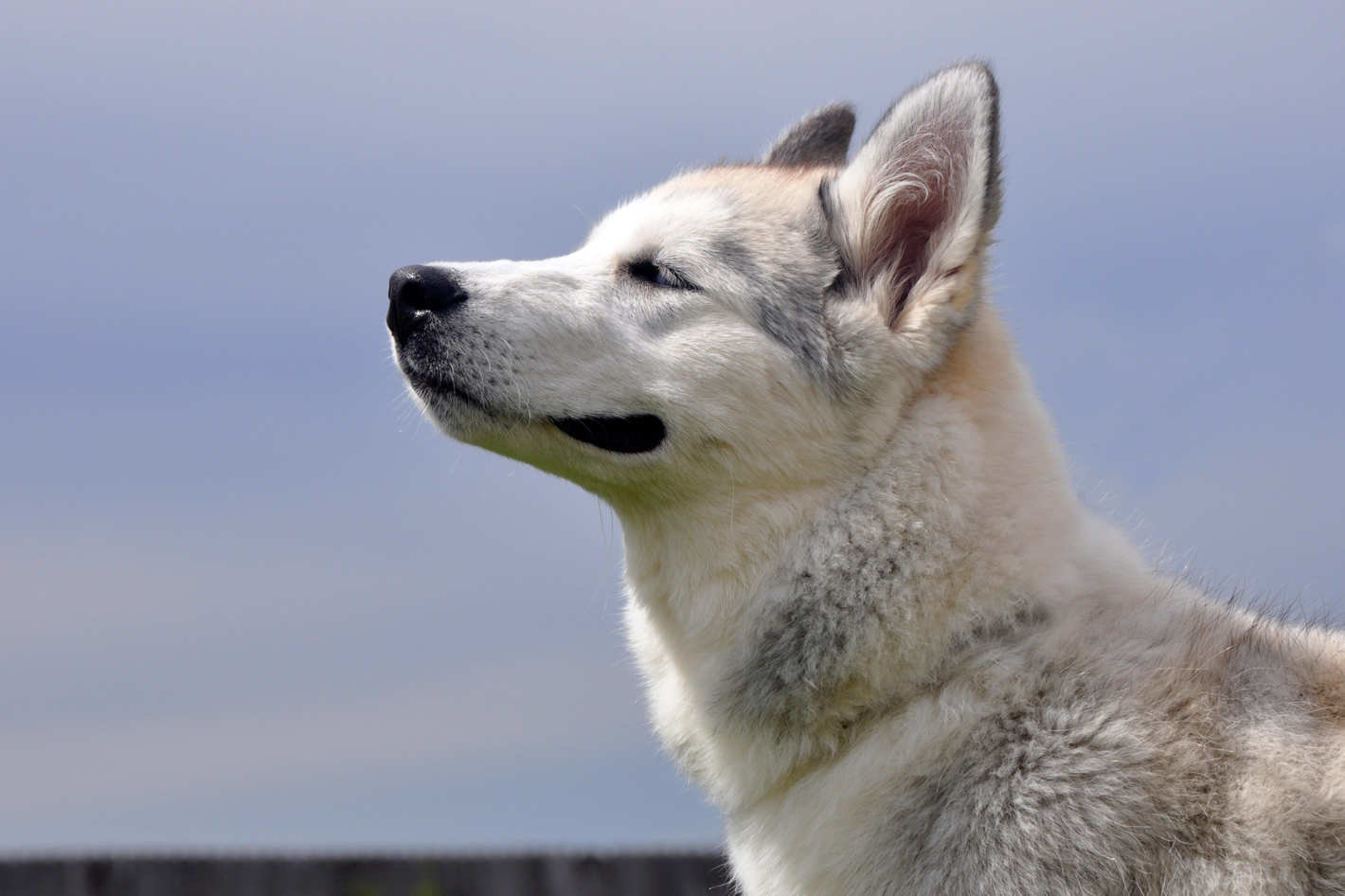Alexandra Horowitz can, actually, or at least she shares some fascinating insights into the canine mind by focusing on the way they primarily engage with the world — that is, their extraordinary senses of smell. Horowitz is the founder of Barnard College's Dog Cognition Lab, and she's also written a new book drawing from her research: Being a Dog, which is out this week. In that book, she states plainly her theory concerning dogs and chronology. "As each day wears a new smell, its hours mark changes in odors that your dog can notice,"she writes. "Dogs smell time."
Compared to our relatively simplistic schnozzes, a dog's nose is a complexly detailed thing, allowing them to pick up scents we cannot. You've likely heard of drug-sniffing dogs, and perhaps even cancer-sniffing dogs. Time-sniffing dogs, though — that was a new one for me. And yet it does make sense, when you try to take a dog's point of view: Humans are visual creatures, understanding the world primarily by what we see. Dogs, on the other hand, are olfactory creatures; their world is defined by scents. But we use our senses to judge time, too, after all. Even without a clock or smartphone nearby, you could guess when it's about mid-afternoon by the way the light is hitting your living room, or the way the heat of the sun feels on your skin. "The dog, I think, can smell that, through the movement of that air through a room," Horowitz said in a recent interview with Fresh Air.
She explained:
Smells in a room change as the day goes on. Hot air rises, and it usually rises in currents along the walls, and will rise to the ceiling and go to the center of the room and drop. And so, if we were able to visualize the movement of air through the day, what we're really visualizing is the movement of odor through the day.Inside your home, then, a new day smells a little differently from midday or evening. But your pet dog is also doing this time-sensing trick every time you step out your door to take him for a walk. A stronger odor is probably a newer one. A weaker odor is a way of sensing the past: Who's been here, and about when? "So being able to detect the concentration of a smell, they're not only seeing what it is, but how long ago it was left," she said. "And the future, in a way, is smelled on a breeze from up ahead, or around a corner."
It becomes easier to understand the way dogs uses their noses to understand their world by comparing it to the way we use our eyes, but, really, it's hardly a fair comparison. A dog trained to sniff out explosives, for example, can detect a trillionth of a gram of TNT. That would be a little like you walking around with a pair of high-powered binoculars taped to your face. But even ordinary pet dogs, who have not been specially trained, have incredible olfactory powers, especially when compared with our own. "It goes so deep, the differences between us," Horowitz said.
Dogs, for instance, have what she describes as "stereo olfaction," meaning that their nostrils work independently of each other; again, one way to better understand how this works is to compare it to our vision. "Just as the images from our two eyes are constructed into a three-dimensional image of the world, the differences in the strength of the smell image in each nostril help the dog locate the souce of the smell in space, whether it's to his left or right, fore or aft," Horowitz writes in her book.
Within their noses, they have receptor cells that grab hold of the odor and transmit the information along to their brains; we do, too, but dogs have "hundreds of millions more" than we do, which is "probably partially responsible for their increased acuity." Not only do they have more of these cells, period, they also likely have more types of receptors, "which allows them to smell more types of things that we might not discriminate at all," Horowitz said. "And, probably, that increased number translates to them having an increased sensitivity to the very existence of a substance."
So the passage of time does have a smell; it's just that our noses are not complex enough to detect it. In a dog's world, the past and present and even, sort of, the future are all layered on top of one another, just waiting to be sniffed out. "Smell rubber-bands time for dogs," as Horowitz phrases it in her book, "pulling some of the past and future into the now."




Reader Comments
to our Newsletter